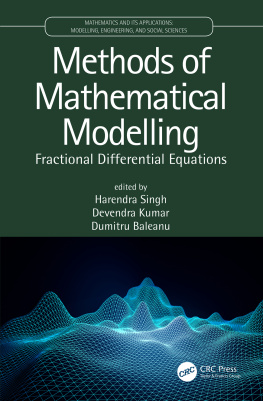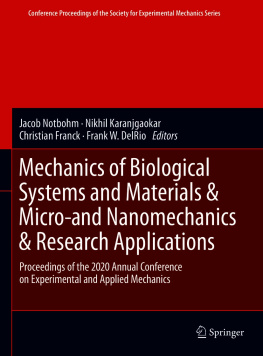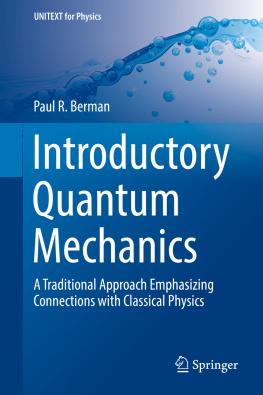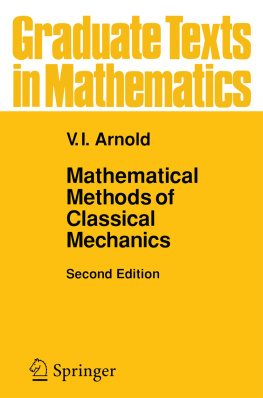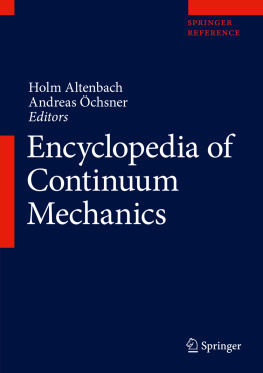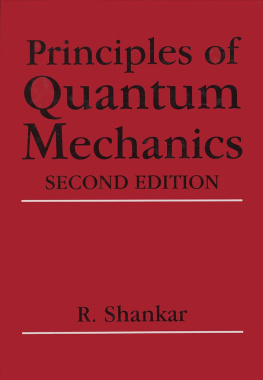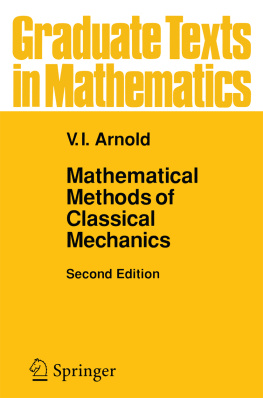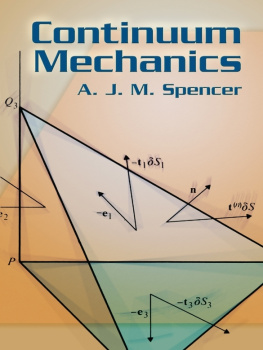
Approximating Perfection
Approximating Perfection
A Mathematicians Journey into the World of Mechanics
Leonid P. Lebedev
Michael J. Cloud
PRINCETON UNIVERSITY PRESS
PRINCETON AND OXFORD
Copyright 2004 by Princeton University Press
Published by Princeton University Press, 41 William Street, Princeton, New Jersey 08540
In the United Kingdom: Princeton University Press, 3 Market Place, Woodstock, Oxfordshire OX20 1SY
All Rights Reserved
Library of Congress Cataloging-in-Publication Data
Lebedev, L. P.
Approximating perfection: a mathematicians journey into the world of mechanics / Leonid P. Lebedev, Michael J. Cloud.
p. cm.
Includes biographical references and index.
ISBN 0-691-11726-8 (acid-free paper)
1. Mechanics, Analytic. I. Cloud, Michael J. II. Title.
QA805.L38 2004
531 dc22 2003062201
British Library Catalog-in-Publication Data is available
The publisher would like to acknowledge the authors of this volume for providing the camera-ready copy from which this book was printed.
This book has been composed in Computer Modern
Printed on acid-free paper.
www.pupress.princeton.edu
Printed in the United States of America
10 9 8 7 6 5 4 3 2 1
Contents
Preface
Although engineering textbooks once provided more breadth than they do today, few ever took the time to offer the reader a true perspective. We all know that myriad formulas are essential to engineering practice. However, modern textbooks have begun to allow formulas and procedural recipes to preoccupy the mind of the student. We have already reached a stage where proofs once deemed essential receive no mention whatsoever. The situation will undoubtedly worsen as computational methods demand an even greater share of the engineering curriculum. In some areas, we are rapidly nearing the point where even a passing familiarity with computational recipes will be deemed unnecessary: engineers will simply feed data into canned routines and receive immediate output. (It is likely that students will continue to welcome this prospect with open arms, until it finally dawns on them that the same task could be performed by someone who lacks a hard-earned engineering degree.) Unfortunately, all of this points to a diminishing grasp of just how complex real systems (industrial or otherwise) really are. One could argue that this is part of normal social progress: that a major goal of science should be our freedom from having to think too much. Why should the average person not be able to solve problems that surpassed the abilities of every true genius a century ago? But the argument quickly wears thin anyone who engages in research and development activity, for instance, will certainly require a real understanding of things. Training in the use of rigid recipes may be appropriate for a fast-food cook, but not for the chef who will be expected to develop new dishes for persons having special dietary needs. The latter will have to learn a few things about chemistry, biology, even medicine, in order to function in a truly professional capacity.
This book is not a textbook on engineering mechanics, although it does contain topics from mechanics, the strength of materials, and elasticity. It considers the background behind mechanics, some aspects of calculus, and other portions of mathematics that play key roles in applications. The logic that underlies modeling in mechanics is its real emphasis. The book is, however, intended to be useful to anyone who must deal with modeling issues even in such areas as biology. Students and experts alike may discover explanations that serve to justify routine actions, or that offer a better view of particular problems in their areas of interest.
The authors are grateful to Yu. P. Stepanenko of the Research Institute of Mechanics and Applied Mathematics at Rostov State University. Professor Stepanenko is an engineer and designer of measurement devices, and our fruitful discussions with him have resulted in many of the examples cited in this book. Edward Rothwell and Leonard Moriconi read large portions of the manuscript and provided valuable feedback. We are deeply indebted to our editor, Vickie Kearn, for several years worth of help and encouragement. Thanks are also due to editorial assistant Alison Kalett, production editor Gail Schmitt, designer Lorraine Doneker, and copyeditor Anne Reifsnyder. Finally, Natasha Lebedeva and Beth Lannon-Cloud deserve thanks for their patience and support.
Chapter One
The Tools of Calculus
The complexity of Nature has led to the existence of various sciences that consider the same natural objects using different tools and approaches. An expert in the physics of solids may find it hard to communicate with an expert in the mechanics of solids; even between these closely related subjects we find significant differences in mathematical tools, terms, and viewpoints taken toward the objects of investigation. The physicist and engineer, however, do share a bit of common background: the tools of mathematical physics. These have evolved during the long history of our civilization.
The heart of any physical theory say, mechanics or electrodynamics is a collection of main ideas expressed in terms of some particular wording. The next layer consists of mathematical formulation of these main ideas. It is interesting to note that mathematical formulations can be both broader and narrower than word statements. Wording, especially if left somewhat fuzzy, is often capable of a wider range of application because it skirts particular cases where additional restrictions would be imperative. On the other hand, mathematical studies often yield results and ideas that are important in practice for example, system traits such as energy and entropy.
Among the most mathematical of the disciplines within physics is mechanics. At first glance other branches such as quantum mechanics or field theory might seem more sophisticated, but the influence of mechanics on the rest of physics has been profound. Its main ideas, although they reflect our everyday experience, are deep and complicated. The models of mechanics and the mathematical tools that have been developed for the solution of mechanical problems find application in many other mathematical sciences. The tools, in particular, are now regarded as an important part of mathematics as well. Indeed, the relationship between mechanics and mathematics has become so tight that it is possible to consider mechanics as a branch of mathematics (although much of mechanics lacks the formalized structure of pure mathematics).
In this book we shall explore the role of mathematics in the development of mechanics. The historical pattern of interaction between these two sciences may yield a glimpse into the future development of certain other fields of knowledge (e.g., biology) in which mathematical rigor currently plays a less fundamental role.
Our use of the term mechanics will include both classical mechanics and continuum mechanics. The former treats problems in the statics and dynamics of rigid bodies, while the latter treats the motions, deformations, and stresses of bodies in cases where the details of atomic structure can be neglected. Thus mechanics describes the behavior of a great many familiar things. It can further account for the influence of phenomena previously not considered under the heading of mechanics: a mechanical body can exhibit magnetic properties, for example. Mechanicists developed simple but effective mathematical models of real objects used in engineering practice. These include models of beams, plates, shells, linearly elastic bodies, and ideal liquids. The development of mathematical tools for the solution of specific problems was done in parallel with this, and often by the very same persons. Early on, nobody tried to divide mathematics into pure and applied portions. There was a certain unity between mathematics and physics, and impressive amounts of progress were made on both fronts even though the number of research scientists was considerably smaller than it is today. We know Sir Isaac Newton (16421727), for example, as both a great physicist and mathematician. The names Euler, Bernoulli, and Lagrange also summon images of first-rate mathematicians without whom much of continuum mechanics may not have survived. These historical icons, along with many others, developed new mathematical tools not only out of pure mathematical curiosity: they were also experts in applications, and knew what they needed in order to solve important practical problems. They understood the directions that mathematics needed to take during their lifetimes. Augustin-Louis Cauchy (17891857), whose name is encountered in any calculus textbook, introduced a key notion in continuum mechanics: that of the stress tensor. He elaborated it by exploiting the same tools and ideas he used to solve problems in pure mathematics. Many important branches of mathematics appeared in response to the very real needs of engineering and the other applied sciences.
Next page

